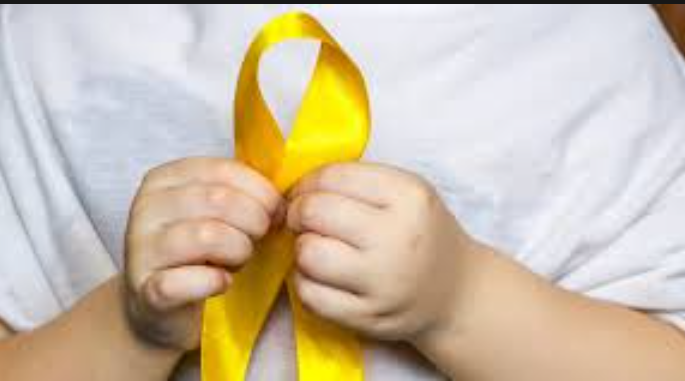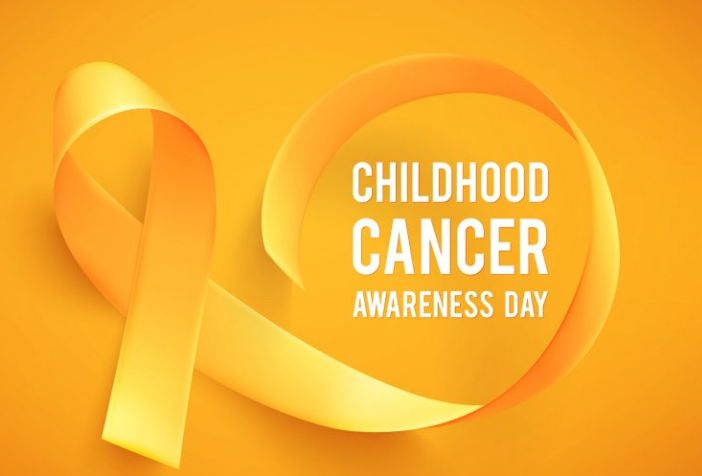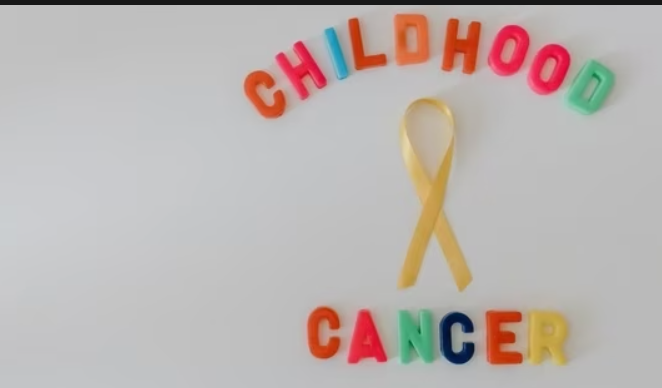Although treatment tends to be intensive, most kids are able to put childhood cancer behind them.
The American Cancer Society estimates that over 11,000 children under the age of 15 will receive a childhood cancer diagnosis in the United States this year. The situation is too much for the entire family to handle.
Thankfully, improvements in medical care have led to a significant increase in the number of people who survive childhood cancer and ensure that it never returns, both in developed and developing nations. The president and CEO of St. Jude Children’s Research Hospital in Memphis, Tennessee, Dr. James Downing, states that 80% of those kids will have their pediatric cancer cured. Thus, things are looking very well.
Also read-Breast cancer : A Patient’s Guide to Breast Cancer

Even so, experts say childhood cancer generally requires intensive treatment, and there’s serious potential for short- and long-term side effects. Despite improved cure rates, 1 in 5 kids diagnosed with cancer succumb to the disease.
“Pediatric cancer remains the leading cause of death due to disease in children between the ages of 1 and 15 in the United States,” Downing says. “So there still is a lot of work to do, and we (at St. Jude) and other places are focused on that.”
This year, in the U.S., more than 11,000 children under the age of 15 are expected to be diagnosed with cancer, according to the American Cancer Society. It’s an overwhelming scenario for the whole family.
Even so, experts say childhood cancer generally requires intensive treatment, and there’s serious potential for short- and long-term side effects. Despite improved cure rates, 1 in 5 kids diagnosed with cancer succumb to the disease.
“Pediatric cancer remains the leading cause of death due to disease in children between the age of 1 and 15 in the United States,” Downing says. “So there still is a lot of work to do, and we (at St. Jude) and other places are focused on that.”
Types
The cancers that kids frequently develop differ from those that are most common in adults. The most common types of childhood cancer—those occurring between birth and 15 years of age—include:

- Leukemia (which begins in bone marrow or other tissue that forms blood)
- Brain growths.
- Nerve cell cancer, or neuroblastoma
- The lymphatic system, which fights infections, is where lymphoma begins.
Causes
Lifestyle factors do not appear to be a major factor in the development of cancer in children, unlike in adults. This is due to the fact that children haven’t lived long enough for lifestyle factors, such as smoking exposure or dietary decisions, to have an immediate effect on cancer risk, even though they can.

Factors that may cause or increase a child’s risk for cancer include:
- Genetics: inherited genetic mutations, gene alterations that impact cell growth rate, etc.
- Children with certain medical conditions, such as Down syndrome, may be more susceptible to cancer.
- Problems with development in utero, where some cells fail to mature and develop into malignancies such as Wilms tumors.
- Early childhood infection exposure
- Radiation exposure from sources such as medical imaging tests and X-rays.
Symptoms
Adults can undergo screening tests to identify specific cancers, such as colon cancer. However, that isn’t the case with children. Rather, the focus is on acting when symptoms may indicate cancer, which is not always the case.

childhood cancer
In actuality, the ACS states that symptoms frequently resemble those of more prevalent diseases and injuries. But some indications and symptoms might be connected to malignancies in children. Even though there are no overt signs, one should pay attention to symptoms that appear suddenly, those that cannot be attributed to another cause, and illnesses that continue for an unknown period of time.
Some possible symptoms to look for include:
- An abnormal lump.
- Swelling, like in the joints or back.
- Changes to the eye, such as white coloring behind the pupil,
- Impaired vision.
- Pain in one area of the body, like bone or joint pain.
- Headaches are often accompanied by vomiting in the morning.
- Fever or another illness that persists.
- Memory loss, confusion, or other cognitive changes.
- Speech problems.
- Changes in personality and behavior
- rapid, unexplained weight loss.
Diagnosis
“Childhood cancer is diagnosed based on signs or symptoms of the cancer and, as such, will differ significantly from cancer to cancer,” Friedman reiterates.

childhood cancer
It also takes time to determine if, in fact, what a child is experiencing is cancer. “Most children go back and forth to their primary care providers a number of times before getting diagnosed because most of these symptoms are not specific to cancer and are usually not cancer,” Friedman says.
In addition to symptoms, a doctor will inquire about the child’s medical history and perform a physical exam. If there’s any reason for further evaluation, a workup may be done, which may include performing an X-ray or other imaging. If an unusual lump or tumor is discovered, a test to check if it’s cancer, known as a biopsy, may be performed.
When cancer is confirmed, a closer evaluation and additional testing may be done. This can range from blood tests to bone scans to provide more detail on the cancer, from type to stage—or how far it has spread. This will help guide treatment.
Treatments
The majority of childhood cancers respond to therapy. About 90% of children with childhood ALL have long-term survival rates, making it the most common form with an extremely good prognosis.

childhood cancer
“The majority of patients are cured of their disease for the majority of diagnoses that we see,” says Dr. Lewis Silverman, the Dana Farber/Boston Children’s Cancer and Blood Disorders Center’s director of clinical research and clinical care. “The child can grow up and live out the rest of their life, and the cancer goes away and doesn’t come back.”
Similar to adult cancer therapy, pediatric cancer treatment is based on the type of cancer, but there are three mainstays:
- Chemo.
- Surgery.
- Radiation (though to a lesser degree)
Also read-Cervical Cancer : A Patient’s Guide To Cervical Cancer
images source: Google
Disclaimer: The opinions and suggestions expressed in this article are solely those of the individual analysts. These are not the opinions of HNN. For more, please consult with your doctor.




































